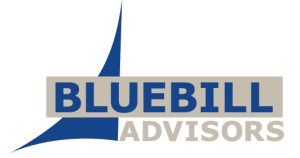Continental DataGraphics (CDG), a subsidiary of The Boeing Company [NYSE: BA], announced that it has formed a value added reseller relationship with EMC Corporation [NYSE: EMC]. Under the terms of this agreement, CDG will now be able to offer the EMC Documentum suite of products and services to its customers. The newly formed VAR alliance relationship with EMC will enable CDG to offer EMC technologies to complement CDG’s digital imaging and information management services. They can also be combined as needed with system integration services to facilitate access to data on legacy systems. CDG’s Professional Services Group offers a staff trained in EMC software implementation and support. They are available to consult with customers to analyze requirements for document and records management, scanning services, software, systems integration and other services available as a part of CDG’s Digital Document Solutions offerings. http://www.cdgnow.com, http://www.emc.com
Page 386 of 935
Convera Corporation (NASDAQ:CNVR) announced the newest addition to its Open Excalibur Partner program. BrightPlanet Corporation, is focused on deep Web research, monitoring and management. Coupled with the Web indexing capabilities of Excalibur, BrightPlanet’s Harvest Engine will provide access to the internet and internal content, allowing the harvest of Deep Web, Surface Web, and internal file systems, without restrictions due to language or file type. This capability will provide Excalibur users with a variety of targeted content relevant to their needs. The Open Excalibur search platform integration of third party products and services by adhering to REST and XML. In addition, Convera is working with partners on an open indexing API to allow third party technologies such as language processing, entity extractors, and geo-tagging to fit directly into the indexing pipeline. The Open Excalibur platform will allow customers to incorporate other technologies to customize the Excalibur search and analysis capabilities to their specific needs. http://www.convera.com, http://www.brightplanet.com
Intellext, creators of the search tool Watson, announced a product enhancement that will provide all users of Microsoft SharePoint Products and Technologies with the ability to have content automatically delivered from SharePoint sites directly to their desktop. Watson is an intelligent search tool that proactively finds and delivers relevant information to users. It works alongside Microsoft Office and web applications, understands the context of the documents a user is working on, and automatically finds relevant information from the desktop, the web and across the enterprise. Content is delivered to the user’s desktop in a non-intrusive sidebar. Intellext introduced integration with Microsoft SharePoint as a way to offer an out-of-the-box solution to enterprise content delivery. With Watson, enterprise content finds the user. With Watson connected to SharePoint sites, content becomes proactive, more relevant to the task at hand, and is used more often. In addition, Watson ensures that existing access permissions are upheld, so that users can access only the content they are authorized to view. Watson Professional now includes, at no additional charge, the ability to connect to Microsoft SharePoint sites.
Xerox Corporation (NYSE: XRX) unveiled DocuShare CPX and DocuShare 5.0, two new enterprise content management software products built on a single technology platform. Businesses can use one or both applications to handle their content and document management needs, such as financial record-keeping or disclosure-related government regulations. Targeted at large enterprises and public sector organizations, DocuShare CPX makes it easy for people to share content, collaborate, and automate critical work processes such as processing mortgage loan applications or routing resumes through a human resources department. In addition, DocuShare CPX supports Web conferencing and social computing features such as blogs and wikis that can be managed and stored as legally binding records for auditing later. DocuShare 5.0 includes enhancements that minimize the need for IT support, including automatic deployment of the software across an organization’s network. DocuShare 5.0 can be used as a standalone application for managing day-to-day business content or through new search capabilities where workers can access data through multiple connected DocuShare and CPX servers. DocuShare software is entirely Web-based, works across multiple operating systems, and can integrate with enterprise infrastructure databases from Oracle, IBM and Microsoft. It also works with Internet Explorer, Netscape, Safari, Opera and Mozilla Firefox Web browsers. Both software products can integrate with other Xerox offerings such as FreeFlow SMARTsend scanning software and WorkCentre Pro. The entry-level U.S. list price for a complete DocuShare 5.0 system with 20 seats starts at $4,500, and a 100-seat system of DocuShare CPX starts at $45,000. Additional seat and volume pricing is available for both products. Existing DocuShare customers with a Gold support agreement can upgrade to DocuShare 5.0 at no charge or to DocuShare CPX at with discounts. Both products will be available in English beginning in April. http://www.xerox.com/docushare
Via Scott Abel, we learned about the formation of the OpenDocument Format Alliance. I went straight to the “about” page, which provides the current list of members. The right concentration of UnMicrosoft vendors are there–Sun, Novell, IBM, Corel, and RedHat. But there are a few interesting members, including the American Library Association and the Massachusetts High Technology Council (and yes, if you go to their Web page, that is indeed the unlikely romantic pairing of Ted Kennedy and Mitt Romney chuckling in the picture on the upper left). The Mass High Tech Council caught my eye because they are a famously pro-growth organization that might not always get behind this kind of initiative. Perhaps they have suddenly realized that standards are good for growth? Or perhaps there are enough Massachusetts High Tech companies with an interest in ODF? Novell’s headquarters is in Massachusetts now, but they are not a member of the Council. But Sun has a big campus here, and they are a member. So that might explain it.
Scott’s article has a good roundup of related news coverage.
Xinet, Inc. announced its new, Uploader tool and an upgrade to Xinet WebNative. Uploader is a stand-alone application that lets vendors and contractors transmit photography, artwork and other deliverables to a client’s Xinet WebNative or WebNative Venture database by dragging and dropping files onto a desktop icon. Uploader can require vendors and contractors to enter metadata details before uploading files. The WebNative Venture database then automatically ingests that metadata and triggers e-mail notifications and other actions to streamline the workflow. Users can now review digital assets and the metadata associated with them by clicking directly on the images embedded in Xinet WebNative PDFs. Interactive PDFs make it easy to reuse images in production because clicking on a PDF reveals information about the source, original format and previous uses of a graphic. Xinet WebNative now makes Web previews from RAW camera files from 80 professional digital camera backs, including many Canon, Kodak, Minolta, Fuji and Nikon models. Users can see previews and custom-order these files. Xinet now offers a companion Versioning tool that brings the same functionality for Illustrator CS and CS2 workflows. The new Versioning tool allows designers to keep track of rounds of approved revisions, enables art directors to review work in progress, and lets clients view multiple versions of artwork in the context of a document. http://www.xinet.com
IBM announced it has signed an agreement to acquire Language Analysis Systems (LAS) provider of multi-cultural name recognition software solutions for mission critical applications. IBM customers will be able to leverage a unique knowledgebase of linguistic information on demand from LAS’s 20 years of linguistic research and the analysis of millions of names gathered from across the world. This will enable them to create an accurate, real-time view into the linguistic and cultural properties of names. This technology has historically been and continues to be widely used within the federal government to support the identity recognition needs of solutions ranging from border control to international law enforcement. Today IBM’s global name recognition technology has seen increased utilization in the private sector where it is being used to increase the accuracy of watch list checks, ferret out fraud, and enable global customer-facing applications. Through better recognition and verification of customer names, customers can better ensure that operations like call centers and direct marketing run smoothly. Industry applications of the technology include: Intelligence and Security, Financial Services, Financial Services – OFAC Compliance, Law Enforcement, Homeland Security, and Marketing Services. IBM markets a total of nine global name recognition products designed to help search and manage name data. Each product can be used independently or in an integrated fashion to improve the processing of names for any organization. These include the following: IBM NameClassifier identifies the culture(s) of a name; IBM NameGenderizer identifies the gender of a name; IBM NameHunter culturally sensitive name comparison algorithm; IBM MetaMatch culturally sensitive phonetic name comparison algorithm; IBM Name Variation Generator produces name variants based on culturally sensitive rules; IBM NameParser culturally sensitive personal name parser; IBM Name Reference Library encyclopedia of names, name use and variations; IBM NameInspector Analyzes name data for parsing issues, erroneous names, gender and culture distribution, etc.; and IBM NameStats – Analyzes name data for frequency statistics. http://www.las-inc.com, http://www-306.ibm.com/software/data/globalname/
Nuance Communications, Inc. (Nasdaq: NUAN) announced the immediate availability of PDF Edit!, a PDF creation and editing application designed specifically for the Japanese market. Nuance also announced that SOURCENEXT, a leading software developer and distributor within Japan, has licensed PDF Edit! and will distribute the product as part of its Ikinari PDF product family. Nuance’s PDF Edit! is available only in Japan, and represents an alternative to Adobe Acrobat for the Japanese market. The product provides what is needed to view, create, print and edit PDF files, with a cost that makes it an affordable solution for every business desktop. http://www.sourcenext.com/en, http://www.nuance.com

